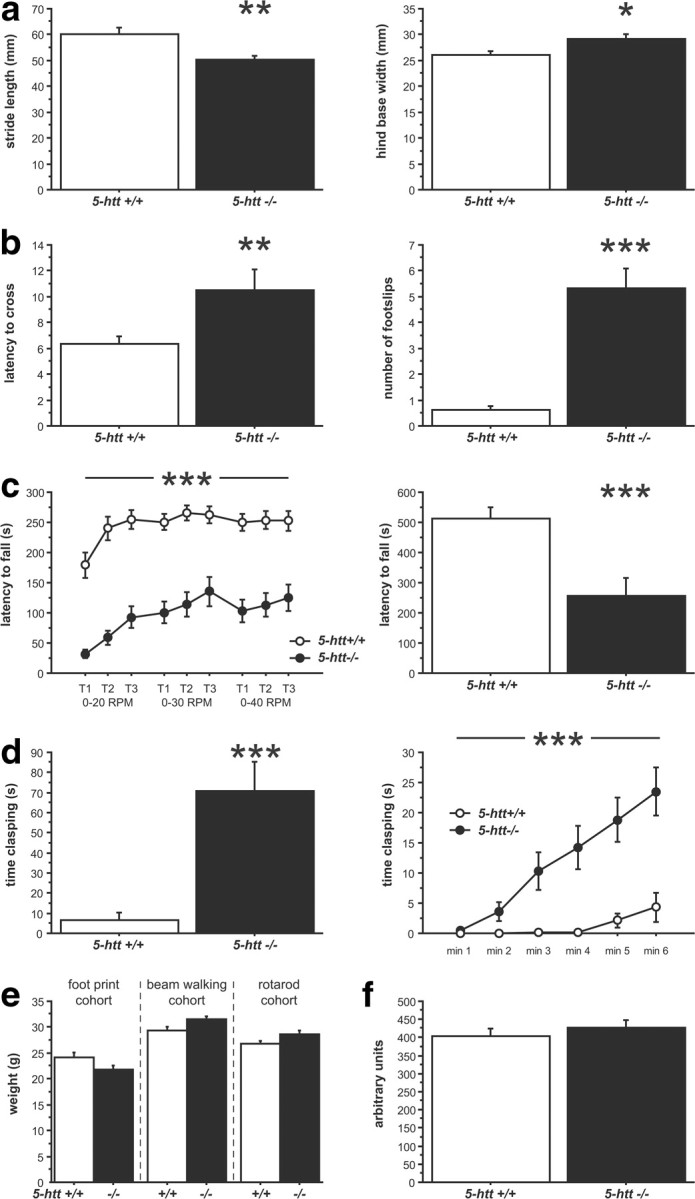Figure 1.

Impaired motor behavior in 5-htt−/− mice. a–d, BG-dependent motor behavior in 5-htt−/− mice was assessed using the footprint test (a), the beam-walking test (b), the rotarod test (c), and the clasping test (d). a, 5-htt−/− mice display reduced stride length (left) and increased hind base width (right) compared to 5-htt+/+ control mice (n = 17–18 mice per group). b, 5-htt−/− mice displayed an increased latency to cross the beam (left) and an increased number of foot slips while crossing the beam (right) compared to 5-htt+/+ control mice (n = 6–16 mice per group). c, In the rotarod test, 5-htt−/− mice were quicker to fall in both, the accelerating (left) and constant speed (20 rpm, right) modes compared to 5-htt+/+ control mice (n = 22–26 mice per group). d, 5-htt−/− mice display increased clasping behavior compared to 5-htt+/+ control mice (left), with increased clasping over time (right) (n = 23–26 mice per group). e, Body weights did not differ between genotypes in the behavioral cohorts. f, Muscular strength as assessed in the grip strength test did not differ between genotypes (n = 6–15 mice per group). *p < 0.05; **p < 0.01; ***p < 0.001.
